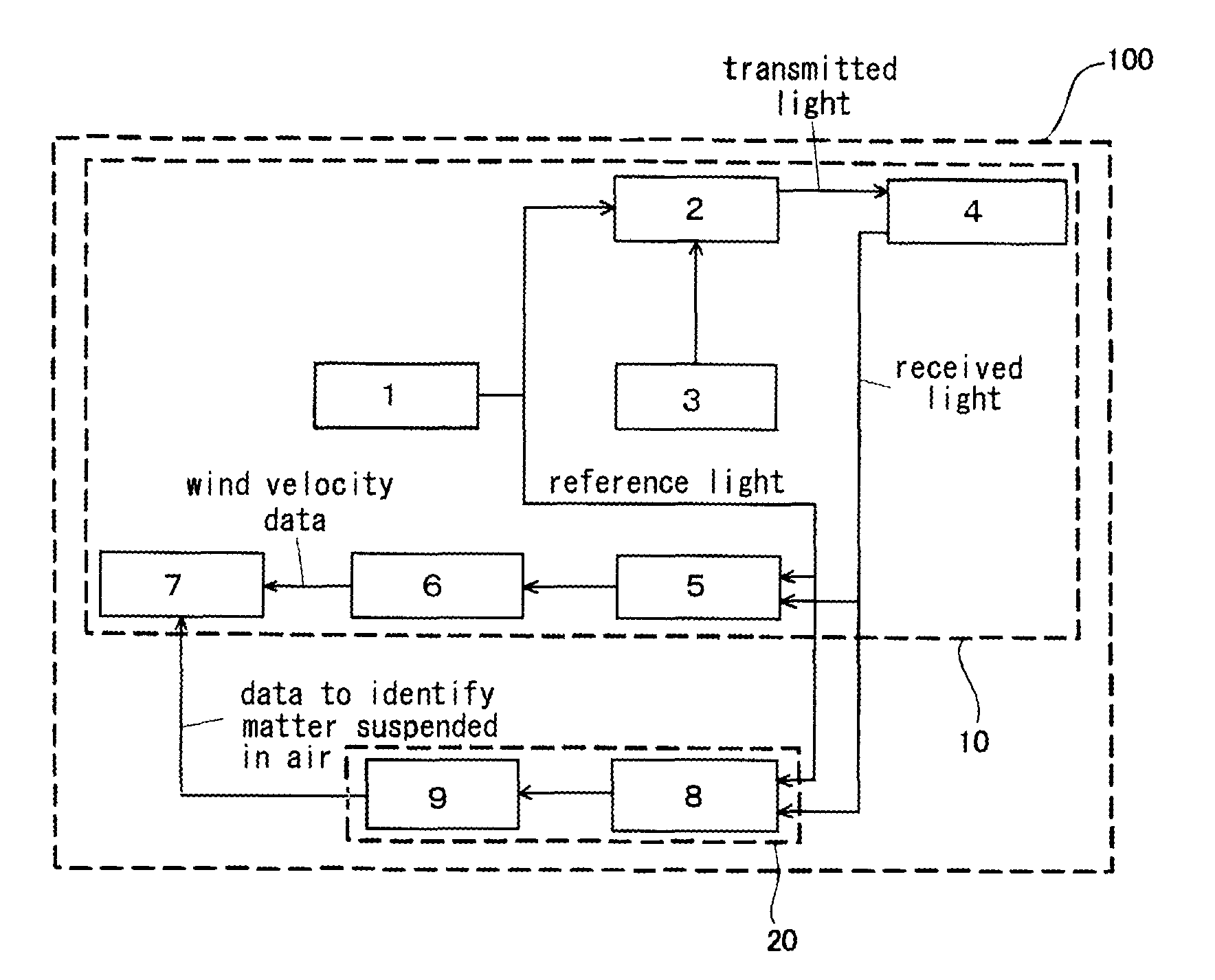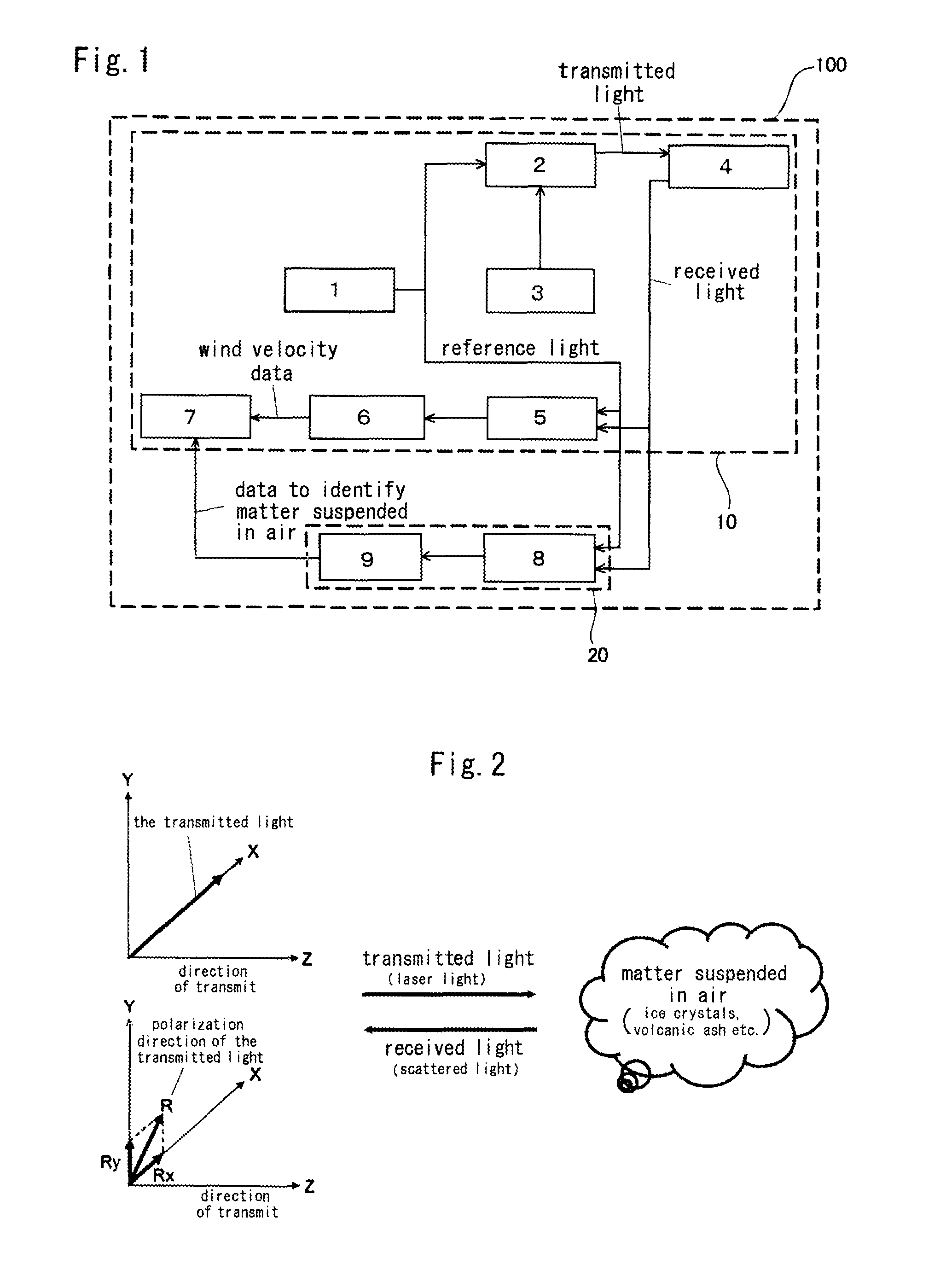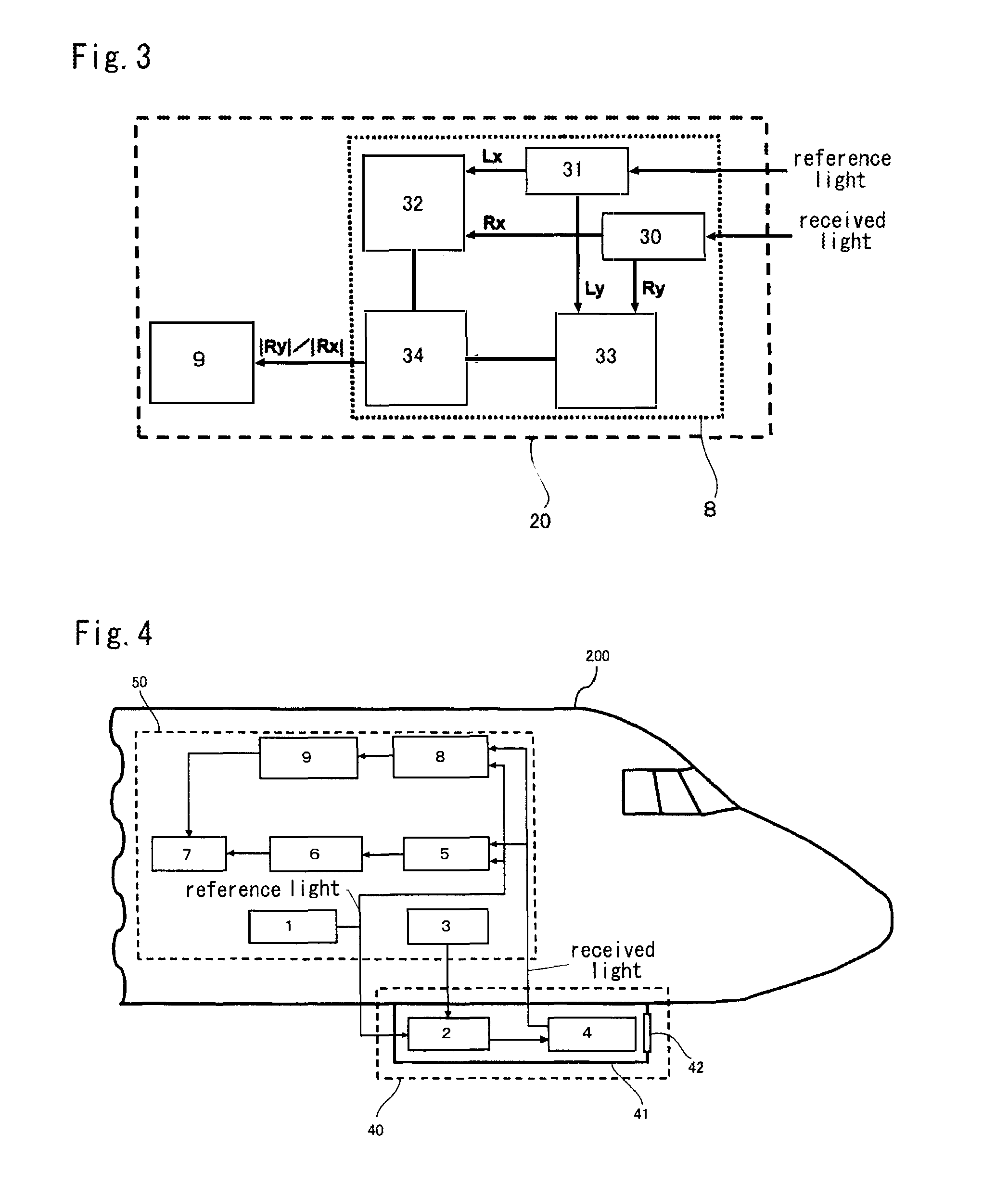Airborne lidar for detecting matter suspended in air
a technology of airborne lidar and suspended matter, which is applied in the direction of instruments, using reradiation, transportation and packaging, etc., can solve the problems of inability to distinguish between components, ineffective for detecting such minute particles as ice crystals and volcanic ash, and inability to cover the entire flight area from the standpoint of cost-effectiveness, so as to shorten shorten the effect of time and shortening the period between engine inspection
- Summary
- Abstract
- Description
- Claims
- Application Information
AI Technical Summary
Benefits of technology
Problems solved by technology
Method used
Image
Examples
example 1
[0037]FIG. 4 shows a state in which LIDAR for detection of matter suspended in air of this invention is mounted on an aircraft. In the figure, an optical telescope and an optical amplifier are mounted on the lower face of the airframe, and devices outside the airframe are covered by a fairing 41 for the purpose of reducing air friction and the like. A window 42 is installed in the direction in which laser light is transmitted, so that laser light can be transmitted and scattered light can be received. In this example, a configuration is employed in which the optical telescope and optical amplifier are mounted on the lower face of the airframe, but other configurations are possible, and mounting on side faces of the nose, on lower faces of the wings, and similar are conceivable; equipment can be mounted on individual aircraft at locations where mounting is easy. Equipment other than that described above is mounted within the aircraft.
[0038]In identification of the components of matte...
example 2
[0042]FIG. 5 explains an example in a case in which there exists a region in which the reception intensity of LIDAR is inverted according to distance. Normally the reception intensity of scattered light declines with distance, but the focal length of the optical system is set in the range from 2 km to infinity, and at close distances, efficient reception is not possible even at high scattered light intensity, so that the reception intensity declines. If this region is region A, then region A is specific to the device and is limited at close distances; hence even when there is inversion in region A, the inversion can be ignored.
[0043]On the other hand, regarding region B in which reception intensity is inverted far away, it is thought that matter which strongly scatters laser light is suspended. However, attenuation of the laser light due to the existence of this matter is also large, and so the entire region in which matter is suspended cannot be observed, and what can be observed i...
example 3
[0045]FIG. 6 is an explanatory diagram of the configuration of the LIDAR for detection of matter suspended in air of Example 3. In this LIDAR for detection of matter suspended in air 100, the transmission side comprises a reference light source 1b which uses a laser diode or similar to generate laser light (reference light) which becomes transmitted light, and an optical telescope 4 which radiates the transmitted light output from the reference light source 1b to a great distance and which concentrates scattered light from a great distance. When Doppler LIDAR is used to detect air turbulence, it is necessary to observe light scattered by aerosols suspended in a high-altitude region extending at most several tens of kilometers in a remote region and at an altitude of 10 km or higher, and in order to detect wind velocity accompanying air turbulence with good precision, an optical amplifier must be used to increase the output of transmitted light; but when specializing for a function t...
PUM
| Property | Measurement | Unit |
|---|---|---|
| depolarization ratio | aaaaa | aaaaa |
| wavelength band | aaaaa | aaaaa |
| depolarization ratio | aaaaa | aaaaa |
Abstract
Description
Claims
Application Information
 Login to View More
Login to View More - R&D
- Intellectual Property
- Life Sciences
- Materials
- Tech Scout
- Unparalleled Data Quality
- Higher Quality Content
- 60% Fewer Hallucinations
Browse by: Latest US Patents, China's latest patents, Technical Efficacy Thesaurus, Application Domain, Technology Topic, Popular Technical Reports.
© 2025 PatSnap. All rights reserved.Legal|Privacy policy|Modern Slavery Act Transparency Statement|Sitemap|About US| Contact US: help@patsnap.com



